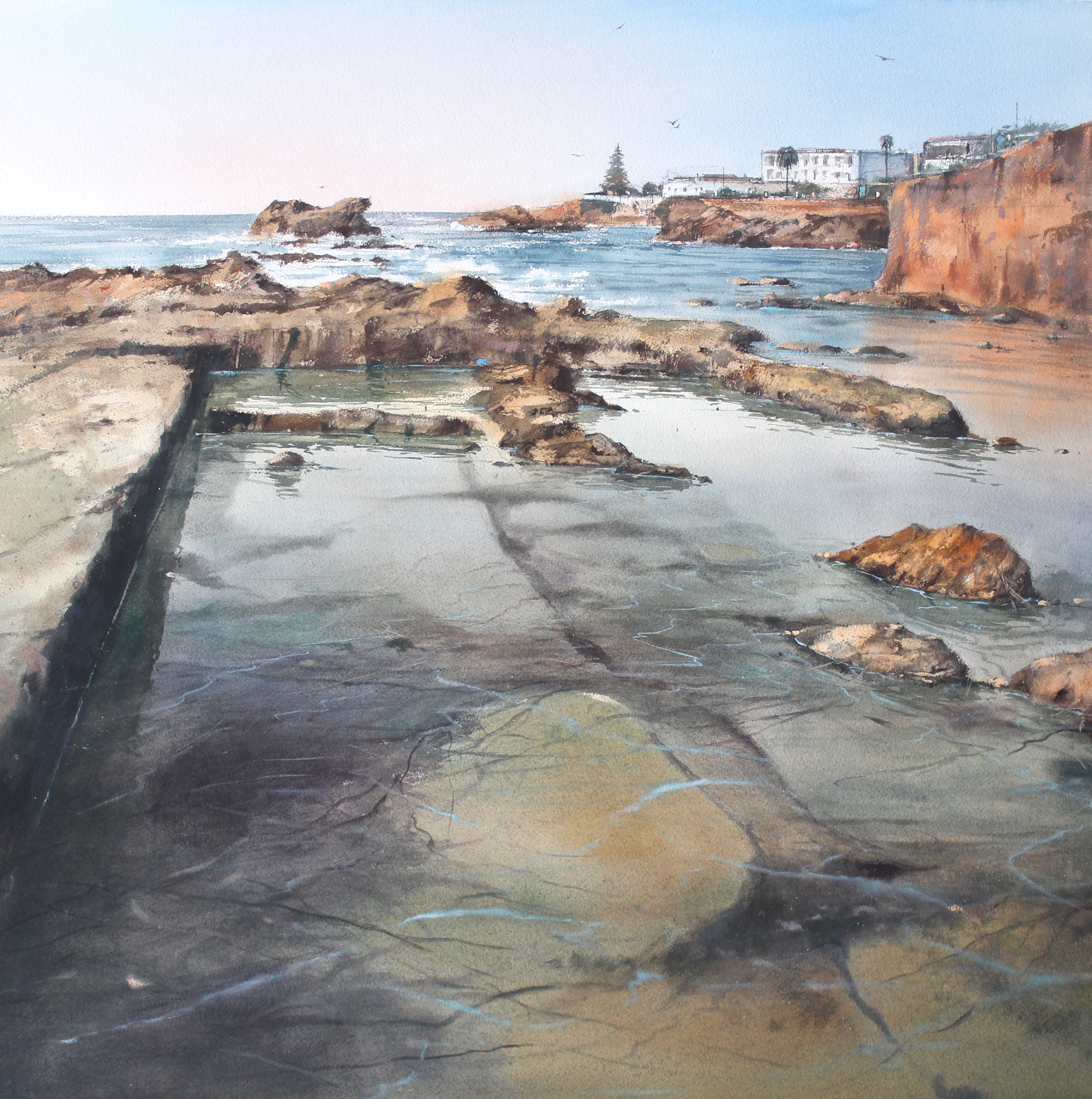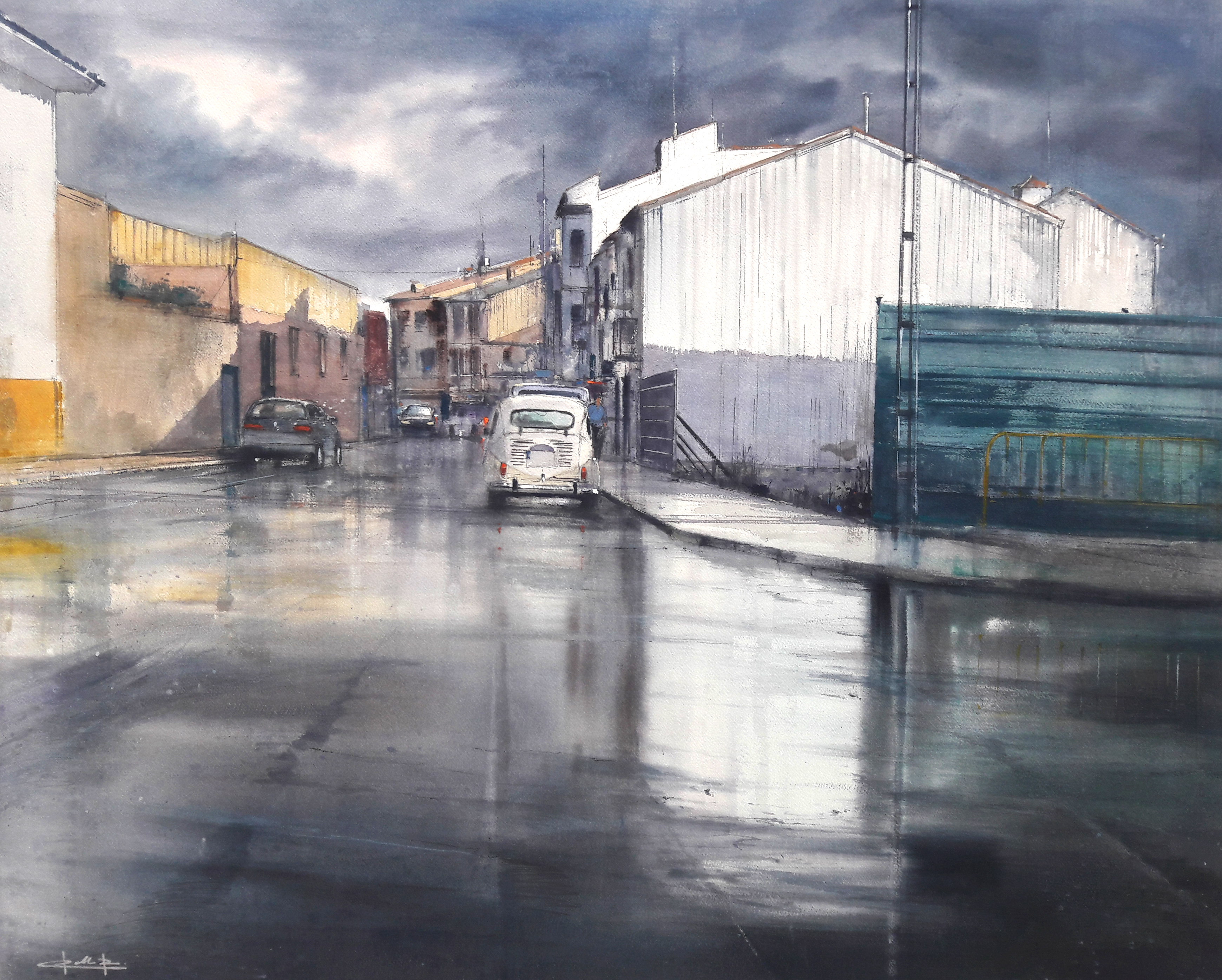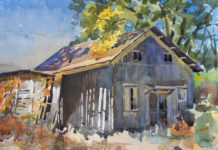In this exclusive chat, world-class watercolorist Pablo Rubén López Sanz shares the secrets to his process.

Kelly Kane: You paint in some of the most iconic cities in the world, but you rarely present the tourist’s perspective. How do you choose your subjects?
Pablo Rubén López Sanz: The first thing I do when I arrive in a new place is locate the water. Rivers, ponds, lagoons, and fountains top my list of favorite subjects. If I’m visiting a coastal area, it’s easy because there’s inspiration everywhere. In general, I stay away from the typical or expected subjects in the places I visit. A lot of time, I’m in a new place for a plein air competition, and the way to stand out is to paint something original or rarely seen. When I paint, I try to represent the atmosphere and personality of the place, the feeling of a specific moment, rather than an identifiable landmark.

Kane: You take a rather quiet, subtle approach to your subjects.
Sanz: For me, the most important aspect of a painting is that it captures the real atmosphere of the place, not an illustration. Staying away from colorful scenes helps me to avoid that kind of artificiality. When possible, I use only two dominant colors and a few touches of their complements in a painting, and I never use the three primary colors at the same time. In the focal point, I add dots of a brighter version of a color from elsewhere in the painting to attract the attention of the viewer. To me, it’s important that a watercolor has uniformity; “unity in diversity” is the key.
Kane: Value, then, does a lot of the heavy lifting in your compositions.
Sanz: The challenge is to create a rich palette of grays with temperature variation, and not paint a black-and-white watercolor. To maintain tonal variety, I incorporate dark, medium, and light tones, but not in the same proportion to avoid monotonous distributions. Also, the grays must be harmonized with the other colors in the work, including the blues of the sky or the greens of the vegetation.

Kane: Another common aspect of your paintings is a large area for the eye to rest. Why do you feel that’s an important element in a composition?
Sanz: Sometimes I spend more time thinking about the composition than actually painting. Composition is where you make your first impact. If the composition is wrong, the rest of the work will have no interest. A good composition must have equilibrium between empty and busy spaces. I usually put a lot of details and brushstrokes in the focal area and avoid overworking the areas where I want less attention. In this empty area, I place some directional lines to guide the eye to the focal point.

Kane: So where do you start your process?
Sanz: The initial drawing is one of the most important steps in my process. In fact, I typically allow up to an hour for this stage because there are often so many compositional elements and perspective issues to contend with before I even think about reaching for a brush. I use a graphite pen and a soft 2B lead for this step, then I tone the whole picture to eliminate the white color of the paper. From there, I approximate what the color of each big shape or area of the painting will be, and once I’ve established a base for each, I start building up layers. I work on wet paper, which allows the colors to blend and mingle, to unify all parts of the composition. As I move further along in the process, I work progressively drier so that I can achieve definition and details. In the intermediate layers, I try to combine both techniques, creating the desired effect of lost and found edges. Usually I begin with the warm tones, the colors of the lights, and then add the cool shadows, finishing with opaque paint to create the details.
For more inspiring stories like this one, sign up for our free weekly e-newsletter.








[…] Instagram Watercolors from Spain Daniel Smith Featured Artist “Pablo Rubén” americanwatercolor putting-a-unique-spin-on-the-landscape/ artistsnetwork […]
Nice article